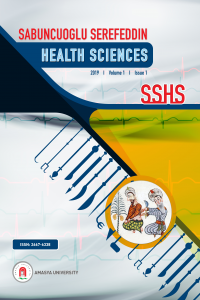Abstract
Supporting Institution
Erzincan Binali Yıldırım Üniversitesi Bilimsel Araştırma Projesi
Project Number
2012/12.01.08
References
- Referans 1.Bedirli N, Akkaya T: Postspinal Başağrısı. Anestezi Dergisi. 2010:18(3):135-140
In patients receiving spinal anesthesia, can homocysteine and C-reactive protein levels predict the development of postdural puncture headache?
Abstract
Objectives: Postdural
puncture headache (PDPH) is a complication that may arise following spinal
anesthesia. We investigated whether homocysteine and C-reactive protein levels may
be associated in the development of PDPH in patients that received spinal
anesthesia.
Materials and Methods: In order to determine homocysteine and C-reactive protein (CRP) levels,
blood samples were taken from patients before and one day following spinal
anesthesia. A total of 100 male patients were enrolled in the study. The mean
age of the patients was 29 years old. Out of all the patients, a total of 6
developed headaches. The Mann-Whitney U-test was used to compare homocysteine
and CRP levels between patients that did and did not develop headaches.
Results: Homocysteine
levels before and after the operation were higher in subjects that developed a
headache as compared to patients that did not develop headaches (p<0.001). CRP
levels did not differ significantly between patients with headaches and
patients that did not experience them (p>0.05).
Conclusions: High blood levels of homocysteine in patients with
PDPH might be used as a biomarker so to predict the development of PDPH.
However, future larger, multi-center studies are needed to further elucidate
this association.
Project Number
2012/12.01.08
References
- Referans 1.Bedirli N, Akkaya T: Postspinal Başağrısı. Anestezi Dergisi. 2010:18(3):135-140
Details
| Primary Language | English |
|---|---|
| Subjects | Primary Health Care |
| Journal Section | Research Article |
| Authors | |
| Project Number | 2012/12.01.08 |
| Publication Date | August 30, 2019 |
| Submission Date | August 1, 2019 |
| Published in Issue | Year 2019 Volume: 1 Issue: 1 |

